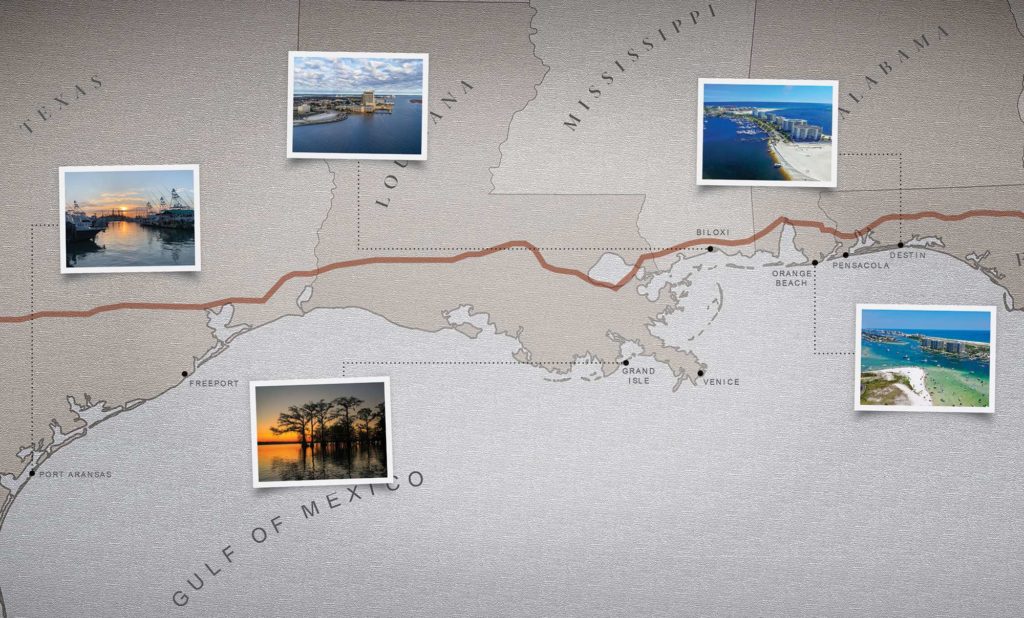
Special delivery: Sign up for the free Marlin email newsletter. Subscribe to Marlin magazine and get a year of highly collectible, keepsake editions – plus access to the digital edition and archives.
The southernmost cross-country route in the US highway system, Interstate 10 strings together a series of notable blue marlin destinations as it winds its way across the upper Gulf of Mexico from western Florida to the Lone Star State. Some of the best-known stops are home to the largest (and richest) sport-fishing tournaments in the Gulf, attracting hundreds of boats and thousands of participants each season; the entire region offers outstanding fishing without the need for international travel. Fish your own rig or charter one: The choice is yours, and the open road beckons.
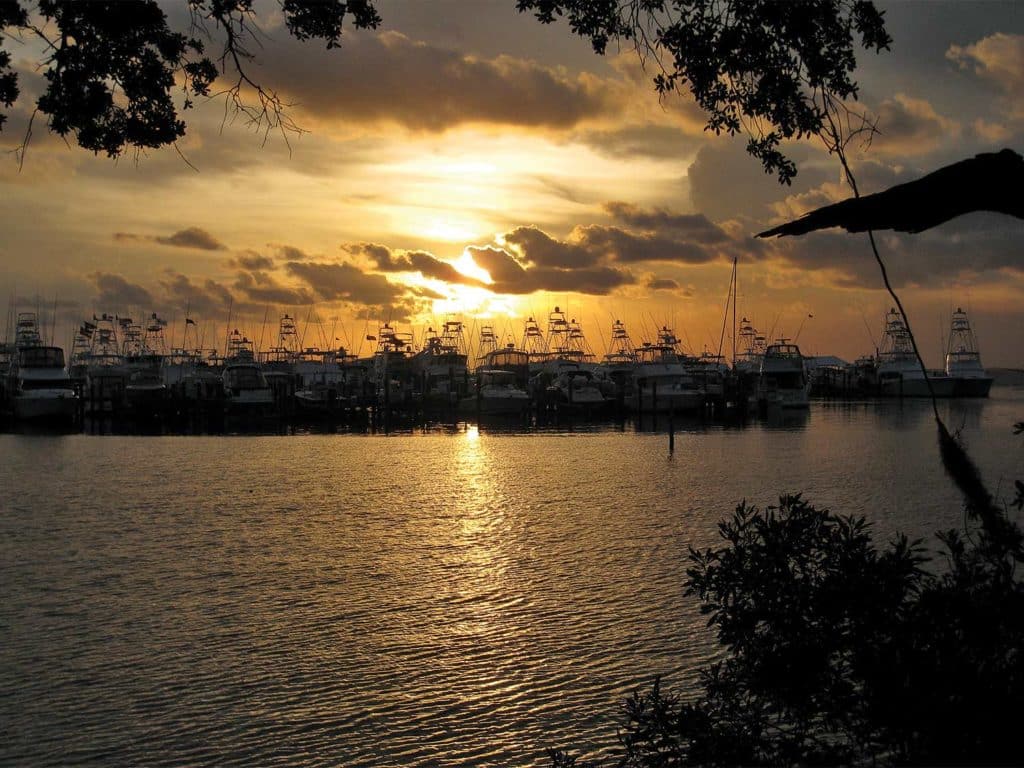
Destin, Florida
The Record-Holder
Distance from I-10: 35 miles. Tagged as the world’s luckiest fishing village, the community of Destin, Florida, is just one of several coastal towns along this stretch of highway that is well-known for producing not only quality offshore action, but top-notch captains and crews as well. Busy local charter docks serve as a kind of community college for big-game fishing—if you can withstand the punishing grind of charter fishing, you’ll probably do just fine anywhere else in the world. Many of the sport’s top captains tied their first Bimini twist as a Destin greenhorn.
Florida’s first blue marlin weighing more than 1,000 pounds was caught just up the beach in Panama City during the now-defunct Bay Point Invitational Billfish Tournament on July 14, 2001. Angler Conrad Hawkins and Capt. Tommy Browning teamed up to boat a 1,046-pound blue to handily win the event and set the state record. Browning was the guest captain on Lucky II, a 51-foot Bertram, and said at the time: “We were trolling the 100-fathom curve, about 65 miles out. The fish came up on [the lure] twice and turned away, and then the third time, she came back and just ate it right down. It’s by far the biggest marlin I’ve caught in more than 40 years of offshore fishing.” Since Hawkins and Browning had fished together many times before, and with Hawkins’ heavy-tackle skill, the pair had the record blue alongside the boat in just over two hours. It beat out the previous state mark of 980 pounds, which was also caught off the Destin/Panama City area.
The largest tournament in the area is the Emerald Coast Blue Marlin Classic at Sandestin. In last year’s event, 88 boats fished for a total cash purse of $1.975 million, the second-largest in the tournament’s history. The winners—boat owner Pete Bell, Capt. Allan Legge and angler Cliff Mountain—won first place on High Cotton, a Texas-based 92-foot Viking, with a 681-pound blue marlin. They pocketed $394,436 for their efforts. Lucky fishing village, indeed.
Watch: Take an immersive look at Quepos and the Offshore World Championship.
Pensacola, Florida
Blue Angels and Blue Marlin
Distance from I-10: 6 miles. Known as the cradle of naval aviation for its flight-training programs, Pensacola, Florida, is also home to the Blue Angels. It’s not uncommon to see the famous blue-and-yellow jets practicing aerial maneuvers over the waters just off the gorgeous white-sand beaches, although the real draw for anglers is well over the horizon.
When a group of fishermen founded the Pensacola Big Game Fishing Club in 1970, they probably had no idea that they were launching an institution that would not only endure over the decades, but one that would also continue to serve as a beacon to promote big-game fishing in the area. While their first tournament in 1971 involved only a handful of boats and anglers, its popularity grew as the word spread. Today, the Pensacola International Billfish Tournament attracts boats from far and wide, billing itself as one of the most affordable and family-friendly events of its kind in the Gulf of Mexico; this year, it celebrates its 51st anniversary. Two other club events—the Junior Angler tournament and Pensacola Ladies Billfish Tournament—round out the trifecta.
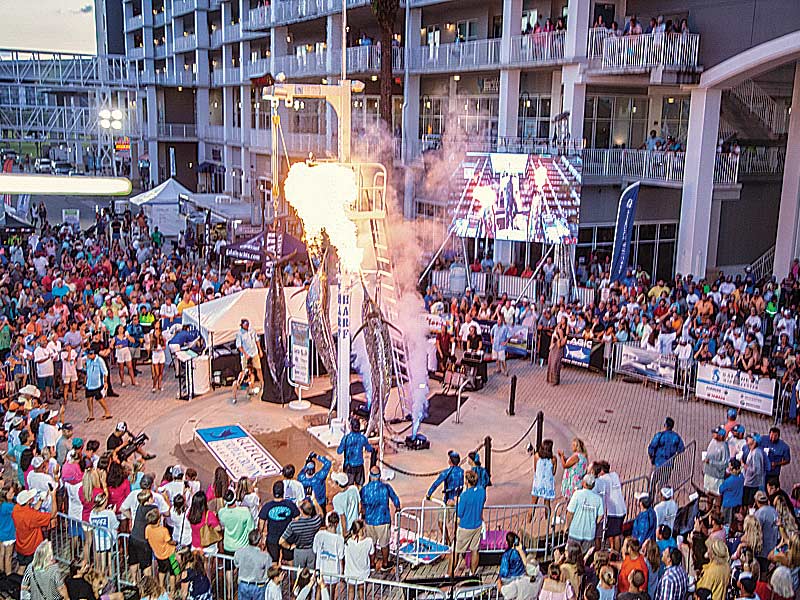
Orange Beach, Alabama
Tournament Central
Distance from I-10: 31 miles. Nearly every weekend in the summer season finds a tournament hosted out of the busy Gulf Coast community of Orange Beach, Alabama, just a short jaunt south off I-10. From the Orange Beach Billfish Classic and Blue Marlin Grand Championship events to the fish-for-a-million-dollars tournament called simply the Invitational and the multiple tournaments hosted each season by the Mobile Big Game Fishing Club—including those for ladies and junior anglers—there is literally an event for everyone.
“I just feel that the competitive nature runs really deep here,” says Scott Burt, tournament director for the Blue Marlin Grand Championship and the Invitational events. “Everyone is passionate about college football, but they’re really passionate about their marlin fishing. It’s been very rewarding to be a small part of the growth of the fishing community here in Orange Beach over the years. It’s a special place.”
The current Alabama state-record blue marlin was caught July 5, 2020, by the team on Fleur de Lis, a 72-foot Viking. Angler Ginger Myers landed the 851.9-pound fish to not only set the state mark, but also to win the blue marlin division of the Mongo Offshore Challenge, a multispecies event that runs from May through September each year.
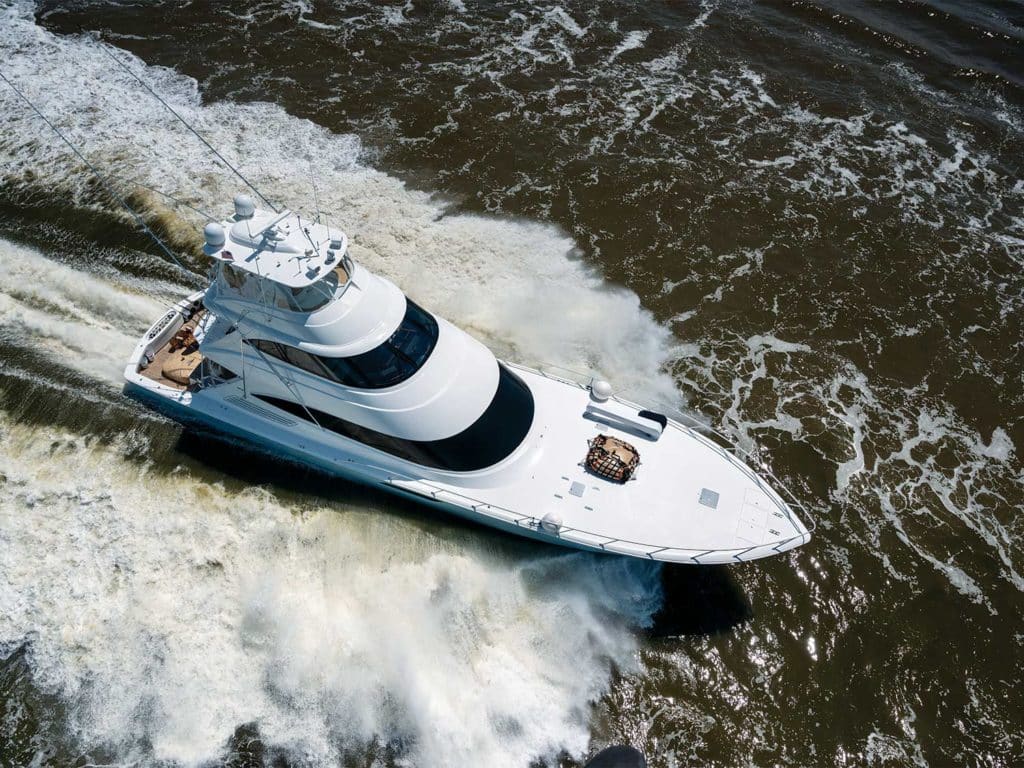
Biloxi, Mississippi
Roll the Dice
Distance from I-10: 6 miles. Interstate 10 swings right past the city of Biloxi, Mississippi, one of the sparkling stars of the state of Mississippi, thanks in large part to the bright neon of the numerous casinos along the busy waterfront. For those who prefer to gamble on their offshore pursuits as much as on their cards and dice, check out the Mississippi Gulf Coast Billfish Classic.
Co-founded by Marlin founder Bill McClellan and then-director of community development for the Isle of Capri Resort and Casino, Bobby Carter, the Classic was a way to shine a spotlight on the sport-fishing opportunities while also showcasing the best in gaming and entertainment the upper Gulf has to offer. The event kicked off in 1997 with 60 boats fishing for a total purse of $300,000; by contrast, the 2021 event showcased a total purse of more than $1.8 million. David Pippin on Miss Orleans had a heartbreaker that first year when he weighed a 917.4-pound blue marlin that had to be disqualified due to prop mutilation, setting the stage for 18-year-old Shannon Faulkner to take the win on his grandfather’s boat, Never Content, with a 631.8-pound blue.
A glance at a list of the Mississippi state records shows that the mark for nearly every offshore species of note has been set during the Classic, which celebrates its 25th anniversary in 2022. The most impressive has to be Barry Carr’s 1,054.6-pound blue marlin, caught on Sea Wolff in 2002, which set the state and Gulf of Mexico records. For the feat, Carr won nearly $311,000 and a new Ford Excursion, and that was 20 years ago. Other notable records include a slew for tuna—an 837.1-pound bluefin, a 205.8-pound yellowfin and a 203.9-pound bigeye—as well as a 242.5-pound swordfish. Pretty impressive numbers for a state with just over 350 total miles of saltwater shoreline.
Venice and Grand Isle, Louisiana
Let the Good Times Roll
Distances from I-10: 75 miles and 105 miles. Show up in New Orleans, Louisiana, during Mardi Gras season, and you’re likely to hear, “Laissez les bons temps rouler,” but we’re interested in a different kind of party, so keep the tires turning and head south along State Road 23. This will find you tracing along the Mississippi River for the better part of 90 minutes until you eventually arrive in Venice, Louisiana. There isn’t much to see once you get there, but if you’re a fisherman or a hunter, it’s as close to paradise as you can get. If it swims in salt water or fresh, there’s a good chance you can catch it, and ducks fill the skies in fall and winter.
The tightknit community is home to a series of tournaments hosted by the New Orleans Big Game Fishing Club, as well as the popular Cajun Canyons Billfish Classic. Runs to the deep blue are relatively short, given Venice’s southernmost position, and the fishing has been consistently good for decades. Linda Koerner caught the state-record blue marlin on July 23, 1977, fishing out of South Pass, Louisiana, on Damifino. Her fish weighed 1,018.5 pounds and was not only the first over 1,000 pounds weighed in the Gulf of Mexico, but it was also the largest caught by a lady angler.
Aside from perhaps being even more remote than Venice, the coastal community of Grand Isle and Hurricane Hole Marina is home to the Louisiana Gulf Coast Billfish Classic. To get there, just keep trucking through New Orleans, then bear left on Highway 90 and then onto Highway 1. This is serious Cajun bayou country as you make your way down past Galliano, Golden Meadow and Port Fourchon. While this tournament is a relative newcomer to the lineup along the Gulf Coast, it’s positioned to kick off the Gulf Coast season in late April and is already seeing good numbers of participating teams each year. And the geographic location offers easy access to the often-prolific waters of the West Delta region. Let the good times roll.
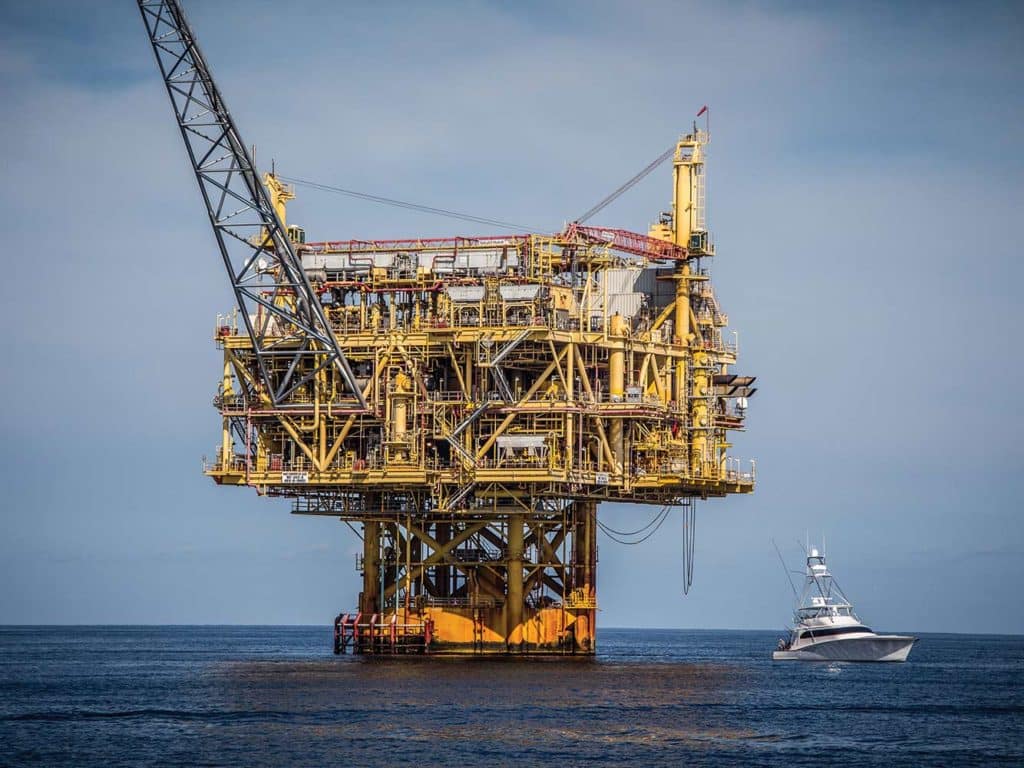
Freeport, Texas
Lone Star Marlin
Distance from I-10: 62 miles. With an incredible 3,360 miles of coastline stretching from the Louisiana border past Galveston to Freeport, Port O’Connor, Port Aransas, and down to South Padre Island and Mexico just beyond, there is little doubt that Texas is a Gulf Coast powerhouse destination. In 2014, angler Richard Richardson caught the state’s largest blue marlin to date, a fish weighing in at 972.7 pounds, which broke the previous record of 876.5 pounds, held since 1988 by James Farrow. One of the first notable records caught on live bait, Richardson was fishing aboard Legacy, captained by Kevin Deerman. And while their fish fell just a few Happy Meals short of grander status, both men agree that larger marlin currently roam the deepwater rigs off the Texas coast. Much larger.
Freeport is home to the Texas Billfish Classic, a highlight of the summer fishing season each year. A glance at the records also indicates the possibility of some outstanding action; in 2019, for example, Capt. Jason Buck led the Done Deal team to victory with six blue marlin and one white marlin released—that’s pretty incredible fishing for two days in the Gulf of Mexico. That same year, angler David Denbow landed the tournament-record blue marlin, weighing 643 pounds, aboard Amigo, captained by Brad Shoenfeld; the team also finished third in the release division with an additional three blue marlin to their credit. That year, 28 boats caught 22 blue marlin, four white marlin and seven sailfish.
Read Next: Learn to make full use of a stand-up harness here.
Port Aransas, Texas
The Texas Triple Crown
Distance from I-10: 170 miles. The final stop on our journey west along I-10 is Port Aransas—just make a left at San Antonio and follow the signs down Interstate 37 to the coast. Simply called Port A by the locals, it’s a bustling place with a lot going on, especially in the summertime. Several offshore tournaments, including the Billfish Pachanga and Texas Legends Billfish Tournament, are held here and draw teams from throughout the region. In 2020, the Legends tournament produced a 737-pound blue marlin for the winners fishing on Walk West; that fish is the largest marlin ever weighed in Port Aransas, according to tournament director Capt. John Cochrane.
Adding to the excitement, three of the top tournaments—the Lone Star Shootout in Port O’Connor, the long-running Texas International Fishing Tournament in South Padre Island/Port Isabel, and the aforementioned Texas Legends Billfish Tournament in Port Aransas—have now banded together to form the Texas Triple Crown Billfish Series. Teams finishing in the top 10 from each event will accrue points toward trophies and bragging rights for the grand-champion boat, captain and mate for the series.
This article originally appeared in the April/May issue of Marlin.







